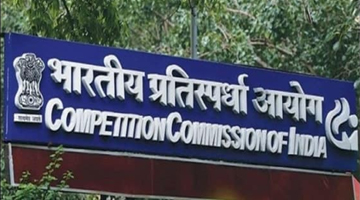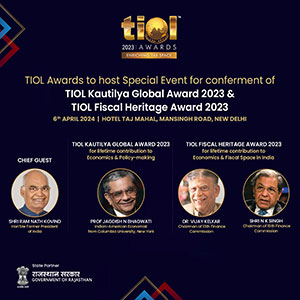Challenges looming over as implementation of GST inches closer
APRIL 17, 2017
By Ankit Shah, CA
 THE enactment on April 12, 2017 of the CGST, UTGST & IGST Bills have given a major boost to the Taxpayers hope of a simpler Tax regime becoming a reality soon. However, the road is not free from hurdles and there is still a long way to go for both the taxman and the taxpayer.
THE enactment on April 12, 2017 of the CGST, UTGST & IGST Bills have given a major boost to the Taxpayers hope of a simpler Tax regime becoming a reality soon. However, the road is not free from hurdles and there is still a long way to go for both the taxman and the taxpayer.
One of the biggest hurdles for the government is the fitment of the goods and services into four tax slabs i.e. 5%, 12%, 18% and 28%. It has been proposed that a committee comprising of senior functionaries from the states would be formed for deciding this fitment. Industry is expecting that essential items such as food grains, which is one of the main reasons for inflation would be zero-rated. Further it is expected that rate would be 5% for items of common use. 12% and 18% would be the standard rates for goods and services. Services that are presently taxed at abated rates would be taxed at 12%. The highest rate would be 28% for luxury and demerit goods.
Additionally, a cess will be added to the top 28% GST Rate on luxury cars and harmful goods like tobacco and fizzy drinks. The committee has decided to meet on 17-18 May to decide on the classification of goods.
Another important concern that is being raised is the Anti-profiteering clause under GST. This clause requires businesses to pass on the benefit of Input Tax credit or Tax reduction to the end consumers by way of a commensurate reduction in prices. Though the motive behind this clause is noble i.e. to protect consumers from inflationary pressures; its implementation carries many challenges. Compliance is the most significant challenge. The authorities would be required to ask the assesses to produce pre and post-GST cost sheets for each product and calculate Tax rates for the same. There is no clarity on how such calculation would be made, would it be on Gross profit basis or net profit basis. Further, it might get difficult for businesses to pass on proportionate benefits to consumers as other costs such as compliance costs are likely to rise under GST.
For assessee, the initial transition phase towards GST is going be the most difficult. A host of factors would add up to the problems for assesse, some of them being reassessment of working capital requirements, transfer of credit, re-drafting of contracts and agreements, updation of ERP & IT Infrastructure etc. The challenges are discussed in detail below: -
- Working Capital requirements:- It is beyond any doubt that Tax Rates are going to increase under GST. Tax on services would increase by 3%. Inter-state purchases of goods that were earlier taxed @ 2% CST (sale against Form – C) would be taxed at 18% IGST. VAT rate in most states is 13.5% which would increase to 18% (CGST 9% + SGST 9%).
Further, compliance costs are likely to rise with 37 returns to be filed in a single year (3 monthly and 1 annual)
Thus, in spite of the availability of more Input Tax credit under GSTit is anticipated that cash outflow would increase and assessee might have to take a negative hit on this. Higher cash outflow means higher working capital requirements. A higher working capital requirement in turn means greater interest costs.
- Re-drafting of contracts and agreements:- The agreements with suppliers and customers would require re-drafting on account of registered place of business, place of supply, GST Identification Numbers. It is especially important to correctly determine the place of supply so that the correct Tax component is charged and appropriate Input Tax credit is available.
Under GST regime, credit would be denied to an assessee if the supplier from whom he has purchased the goods/services fails to deposit the collected tax to the government. This condition may call for introduction of a clause to this effect in the agreements with suppliers. They can be asked to bear interest costs in cases where Input Tax credit is denied to the assesse due to the fault of the supplier.
Another area of concern would be pre-budgeted government contracts. The rate of Tax would increase in GST regime. It needs to be reviewed if the contracts entered into with government organisations provide for an escalation clause on account of increase in Tax Rate under GST. If not, then it might add to the costs of the assessee.
- Modifications to ERP & IT Infrastructure:-The accounting and Enterprise Resource Planning (ERP) software would need to be modified or updated suitably to accommodate needs of GST. GST Calls for maintenance of Stock account with HSN codes to distinguish products at the time of sale. Also, separate accounts for CGST, SGST and IGST receivable and payable will have to be maintained.
- Inter-branch Transfers:- Presently, inter-branch transfers of Goods between branches in different states is exempt from CST against issuance of Form-F. However, such transfers would become fully taxable in GST Regime. The branch effecting the transfer will have to charge IGST @ 18% and the branch receiving the goods shall be eligible to claim Input tax credit of the same. Assessee having multiple branches across India will have to reassess the economic feasibility of effecting such transfers.
- Reverse Charge Mechanism:- Reverse Charge Mechanism (RCM) is currently present in Service Tax. RCM makes it compulsory for the Service recipient to deposit Service Tax to the government instead of the Service Provider for certain categories of services. Purchase Tax is a concept in VAT Laws of some states whereby the person purchasing the goods deposits the VAT with the department.
Reverse Charge mechanism is going to continue under GST Regime. Although the extent of its applicability is not known yet, it is expected that all supplies of goods and/or services from un-registered dealers to registered dealers would attract RCM. Further, the recipient will also be required to self-issue an invoice indicating details such as the HSN Code in case of goods and Service Category in case of services.
- Transfer of Input Tax credit:- On the appointed day, when GST is implemented, the assessee shall be entitled to transfer the amount of credit of CENVAT and VAT credit carried forward by them in their last returns to the Electronic credit ledger account into CGST and SGST respectively.
Manufacturers and Service Providers will have to file their last E.R. 1 and S.T.-3 returns properly in order to transfer the full amount of eligible credit to the electronic credit ledger of CGST.
Dealers under VAT will have to file their last VAT returns properly to transfer the full amount of credit to the Electronic Credit ledger of SGST.
- Differential Tax liability:- The amount of VAT Credit that can be transferred to the Electronic Credit ledger shall stand reduced by the amount of CST liability arising on account of non-production of Statutory declarations in the form of Form-C, Form-F, Form-I etc. that is not substantiated within the prescribed rules. Accordingly, the assessee would need to follow up with their customers in order to obtain the appropriate forms and declarations before the appointed day when GST is implemented.
- Reconciliation of Stock:- Assessee will need to reconcile the quantity and value of inventory as per the books of accounts, stock records and physical stock verification.
Further, the assessee registered as First and Second stage dealers and importers under Central Excise shall be allowed to carry forward the amount of Input Tax credit contained in the stock held on the day when GST comes into effect. In order to effect this, assessee might be required to conduct physical stock taking and stock audit, whereby the value of physical stock alongwith the amount of Input Tax attributable to the same can be ascertained.
The GST isn't free from flaws, but it has certainly raised the bar of the taxpayers expectations. However, everything comes at a cost and GST is bringing its own set of challenges along. The taxpayer has no other option but to be prepared.
(The author is Manager, Taxpert Professionals, Mumbai and the views expressed are strictly personal. Parth Singhal assisted the author in penning this article.)
| (DISCLAIMER : The views expressed are strictly of the author and Taxindiaonline.com doesn't necessarily subscribe to the same. Taxindiaonline.com Pvt. Ltd. is not responsible or liable for any loss or damage caused to anyone due to any interpretation, error, omission in the articles being hosted on the site) |









 THE enactment on April 12, 2017 of the CGST, UTGST & IGST Bills have given a major boost to the Taxpayers hope of a simpler Tax regime becoming a reality soon. However, the road is not free from hurdles and there is still a long way to go for both the taxman and the taxpayer.
THE enactment on April 12, 2017 of the CGST, UTGST & IGST Bills have given a major boost to the Taxpayers hope of a simpler Tax regime becoming a reality soon. However, the road is not free from hurdles and there is still a long way to go for both the taxman and the taxpayer. 





